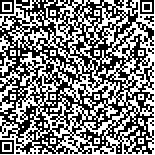李威,田艳萍,赖燕媚,等.早期介入丹佛模式干预联合重复经颅磁刺激治疗孤独症谱系障碍儿童的疗效观察[J].中华物理医学与康复杂志,2025,47(4):359-363
扫码阅读全文

|
| 早期介入丹佛模式干预联合重复经颅磁刺激治疗孤独症谱系障碍儿童的疗效观察 |
|
| |
| DOI:10.3760/cma.j.cn421666-20240829-00681 |
| 中文关键词: 孤独症谱系障碍 早期介入丹佛模式 经颅磁刺激 儿童孤独症评定 |
| 英文关键词: Autism spectrum disorder Early Start Denver model Transcranial magnetic stimulation Childhood Autism Rating Autism |
| 基金项目:深圳市龙岗区医疗卫生科技计划项目[LGWJ2022-(42),LGWJ2021-(63),LGWJ 2023-(66),LGWJ 2021-(55)];中国康复医学会科研课题(KFKT-2023-034) |
|
| 摘要点击次数: 1601 |
| 全文下载次数: 1606 |
| 中文摘要: |
| 目的 观察早期介入丹佛模式(ESDM)干预及重复经颅磁刺激(rTMS)治疗孤独症谱系障碍(ASD)患儿的疗效。 方法 采用随机数字表法将67例2~3岁ASD患儿分为观察组(34例)及对照组(33例)。2组患儿均早期介入ESDM干预,观察组患儿在此基础上辅以低频rTMS治疗,2组患儿干预时间均为24周。于入组时、干预12周、24周后分别采用孤独症行为检查量表(ABC)、儿童孤独症评定量表(CARS)、重复刻板行为检查表(RBS-R)、Gesell发育诊断量表(GDDS)及孤独症治疗评估表(ATEC)对2组患儿进行疗效评估。 结果 干预12周后,2组患儿CARS、Gesell、RBS-R、ATEC量表评分均较治疗前明显改善(均P<0.05);干预24周后,2组患儿ABC、CARS、Gesell、RBS-R及ATEC量表评分均较治疗前进一步改善(均P<0.05),并且观察组上述各量表评分亦显著优于同期对照组水平(均P<0.05)。 结论 早期介入ESDM干预及低频rTMS治疗能显著改善2~3岁ASD儿童的核心症状及全面发育能力,该联合疗法值得临床推广、应用。 |
| 英文摘要: |
| Objective To observe any effect of supplementing treatment according to the Early Start Denver model (ESDM) with repeated transcranial magnetic stimulation (rTMS) in the treatment of children with autism spectrum disorder (ASD). Methods Sixty-seven children on the autism spectrum aged 2 or 3 years were randomly divided into a control group of 33 and an observation group of 34. Both groups were treated as specified by the ESDM for 24 weeks, but the observation group additionally received rTMS. At 12 and 24 weeks, both groups were evaluated using the Autism Behavior Checklist, the Childhood Autism Rating Scale (CARS), the revised version of the Repetitive Behavior Scale (RBS-R), Gesell Development Schedules, and the Autism Treatment Evaluation Checklist (ATEC). Results The CARS, Gesell, RBS-R and ATEC results of both groups had improved significantly after 12 weeks, with further improvements observed another 12 weeks later, when the average Autism Behavior Checklist scores had also improved significantly. At that point the results of the observation group were significantly better than those of the control group, on average. Conclusions Combining ESDM and rTMS can significantly relieve the main symptoms of autism and improve the comprehensive development of children on the autism spectrum 2 or 3 years old. Therefore, such combination is worthy of application in clinical practice. |
|
查看全文
查看/发表评论 下载PDF阅读器 |
| 关闭 |